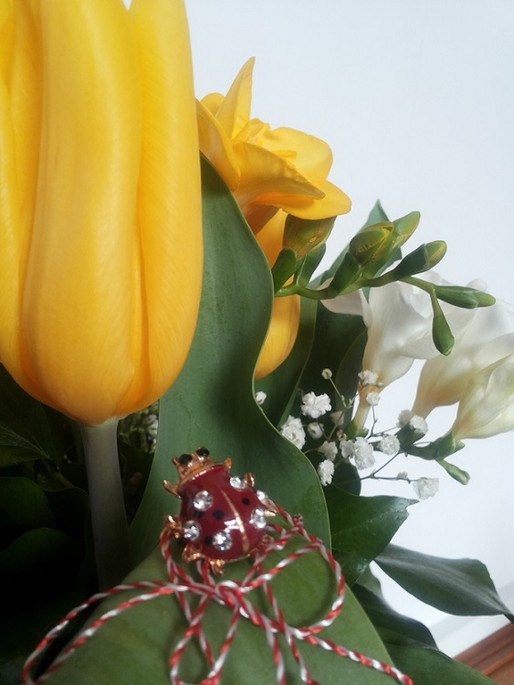There was a time when people lived in complete purity and simplicity, when the gestures and rituals were an imitation of nature, when the mothers adorned the heads of their daughters with field flower crowns while the words of the elders were enriched with poetic allegories.
Among the traditional celebrations that have known the first pages of history it can be said the Mărțișor, celebrated on the 1st of March and which is one of the most popular Romanian celebrations.
The Mărțișor is a pre-Christian celebration present in the Carpathian region and in the surrounding areas, but also celebrated by the Romans and the other nations that have adopted it. The popular Geto-Dacian calendar had two seasons, summer and winter, because the spring and the autumn were considered passing seasons, so March 1st coincided with the start of the new agricultural year which was celebrated in the spring .
The Mărțișor, according to the Romanian costumes, was a coin made of gold or silver tied to a red thread, or a red and white string, or a string made of silver and/or gold hung around the children's neck or hand by their parents before sunrise. The coin meant abundance, while the red-white thread represented the unity of opposites between summer and winter, between hot and cold, light and dark, between fertility and infertility. According to a legend, the Mărțișor’s string would be spun by Baba Dochia, a Romanian legendary character, and represented the thread of the 365 or 366 days of the year.
The purpose of hanging the coin of gold or silver to the children’s neck or hand was to protect them from disease, to rest healthy and clean all year long and to have good luck.
How long the Mărțișor was held by the children around their neck or hand varied from area to area. Some children held it for 12 days and then they tied it to a branch of a young tree. If in that year the tree survived then it was believed that the child will have a good life. Other children held it until they saw the first flowering tree and then tied it to the tree on purpose to be beautiful and healthy as the flowers of that tree. Or others held it until they saw the first storks arrive and threw it against them while making their wishes for health and abundance. While in Muntenia, the Mărțișor was held untill the end of March when the string was attached to a rose and with the coin they bought white bread and cheese to signify having a white face and wine to have red cheeks like the red wine and the roses.
In the present day the Mărțișor, even if it is replaced more and more with expensive jewellery, remains a tradition that captures all the charm of the talisman intended to bring luck and which was given as a present for the beginning of the new year together with the traditional wishes of good health, much happiness and love.















